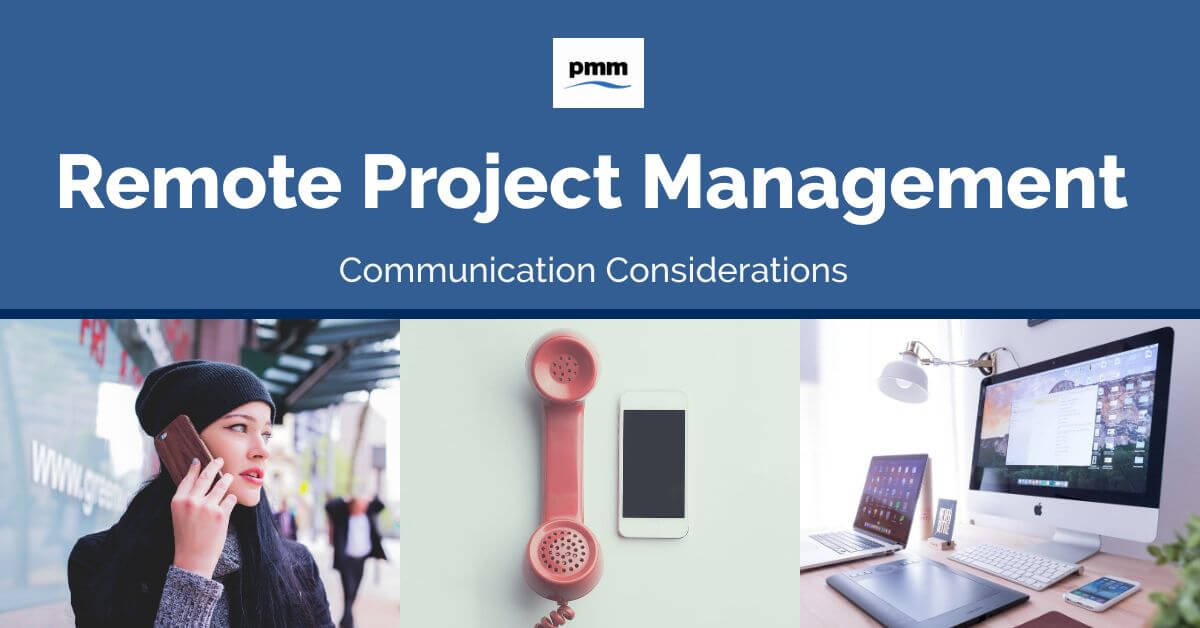Making sure that you team know exactly what needs doing is vital in any project. The need for communication when managing a project remotely is even more important; it’s not as easy to know if someone has really understood you.
There are two key elements to a communication strategy when managing a project remotely: a robust communication plan and the right tools to implement it. We’ll cover both issues here, discussing:
- The principles of a communication strategy
- How to split your communications effectively
- Some tried and tested communication tools
Giving you a path to follow when looking after a project and working from home.
Make a communication plan
When your team works remotely, you lose one of the big elements of communication – body language. It’s also not quite so easy to have a quick chat, since remote working tends to have a strong focus on productivity.
You need to build a strategy that allows for your team to collaborate. There also needs to be a mutual understanding of how your team can raise any issues and how tasks will be allocated.
Some key elements of a communication plan for a remote team include:
- A range of communication tools with defined purposes
- Laying out expectations for response times
- Guidance on how to communicate urgency
- A requirement for personal user manuals – having your team layout how they work best
Where and when to communicate
You don’t want your team to be constantly bombarded with chat notifications. On the flip side, you also want to be everyone confident speaking up when they have questions or something valuable to add.
Silo your communications so that important or urgent issues don’t get missed. You also need to give your team a social outlet since they can’t have a chat around the coffee machine.
You need to have a communication platform for:
- Planning and allocating tasks and deadlines
- Sharing and collaborating on documents
- Work email for clients and internal comms
- Video calls and conferences
- A virtual noticeboard
- Work related conversation
- Informal chat
And be sure that everyone has accounts, every piece of kit has the right license, and the whole team knows how to use the functions you need.
Although there are platforms that’ll accommodate a range of these functions, it can help to keep some things separate. For example, using a completely different chat app for informal communication to your noticeboard should stop chat diverging off topic.
Getting the job done
There are hundreds, if not thousands of tools out there to facilitate communication for a remotely managed project. Each one will have its own limitations and stand-out features that you or your IT team should investigate before rolling it out.
You need to factor in things like how much it will cost, how scalable the technology is, and how user-friendly it is for your team. The level of security and encryption is also important since secure information is likely to be sent. Also, if you choose a communication tool that’s too obscure, you might put off clients who don’t want to deviate from what they know.
Some tools that are common for project management include:
- Trello, Jia, and Friday for setting out your tasks and timelines and allocating work across your team
- WhatsApp, Signal, and Slack for noticeboard and conversational style communications
- Office 365 and Google Drive for collaborating on documents and keeping everything in one place
- Zoom and Skype for video calls with a range of functions such as screen sharing and host control
All of which have their plus point along with feature that aren’t quite perfect. Research is vital to know what is going to work for your team.
Conclusion
It’s vital that you are able to keep in touch with your team. You can’t ask about someone’s weekend as you share a ride in the lift when your team works remote. This type of chat can be emulated, as can other types of office communication. Laying out a plan for communication when managing a project remotely is going to be a big driver of success. Ensuring that you have the right tools for your project to communicate effectively, as we’ve suggested here will be the building blocks to your success.






